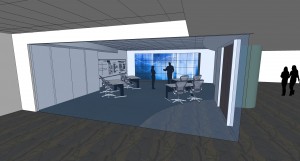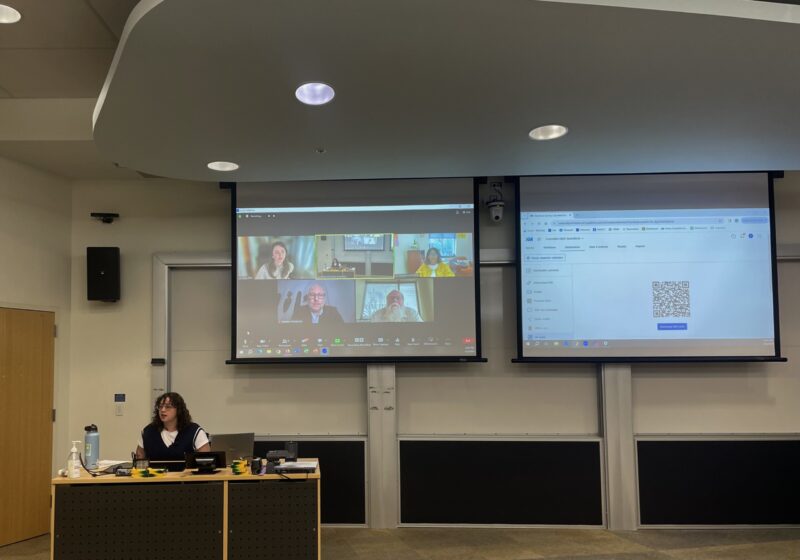 The construction of a new visualization technology center in the lower level of Carlson Library called the VISTA Collaboratory began April 1. VISTA stands for Visualization-Innovation-Science-Technology-Application.
The construction of a new visualization technology center in the lower level of Carlson Library called the VISTA Collaboratory began April 1. VISTA stands for Visualization-Innovation-Science-Technology-Application.
According to Vice Provost and Executive Director of the Health Sciences Center for Computational Innovation (HSCCI) David Topham, who has been leading the development of the VISTA Collaboratory, the mission of the design is to “provide collaborative space to house technology, research, and education in the data visualization sciences.”
In other words, Topham describes the purpose of the project is to create a space “where data comes to life.”
Topham said the VISTA Collaboratory aims to create a cohesive relationship between several areas of study and will “teach visualization technologies for complex data.”
The project is a part of the HSCCI, a partnership between UR, the International Business Machines Corporation (IBM), and the State of New York.
Despite the name Topham noted that the resources provided by the HSCCI are not restricted to the health science. It aims to emphasize all of UR’s strengths by facilitating cutting-edge research with new technology.
This type of center is rare; and the one being constructed in Carlson is the only one in this region of the U.S.
Overall, the VISTA Collaboratory costs about $1.2 million, according to Topham. Funding was provided by the Finger Lakes Regional Economic Development Council.
$5 million was donated in 2012 to the HSCCI to help upgrade two systems that play an integral role in the current state of visualization technology at UR: a Linux cluster called the BlueHive and the Linux supercomputer BlueGene/Q.
“In order to do justice to the complex data we can generate and turn data into knowledge,” Topham said with regards to the motivation behind the VISTA Collaboratory, “we need visualization technology that matches our world class computing resources like the BlueGene and BlueHive.”
Topham said he hopes the new center will encourage students to utilize and learn about innovative technologies.
“The students are the true source of innovation,” Topham said.
According to Topham, the VISTA Collaboratory will foster interest in cutting-edge research across a multitude of fields at UR.
“I’d like to see data visualization research and education curriculum develop out of this facility,” he said.
The libraries played a large role in making the construction of the center go as easily as possible.
“The representation, storage of and access to information is traditionally [within] the domain of our libraries,” he said. “We hope that ,through our efforts, we can support the transition of the libraries at UR to new, high-tech approaches to their mission.”
Representatives from the HSCCI visited centers at other universities after which the University could model the VISTA Collaboratory, including Stanford University, the University of North Carolina and the University of Calgary.
McAdams is a member of the class of 2017.




